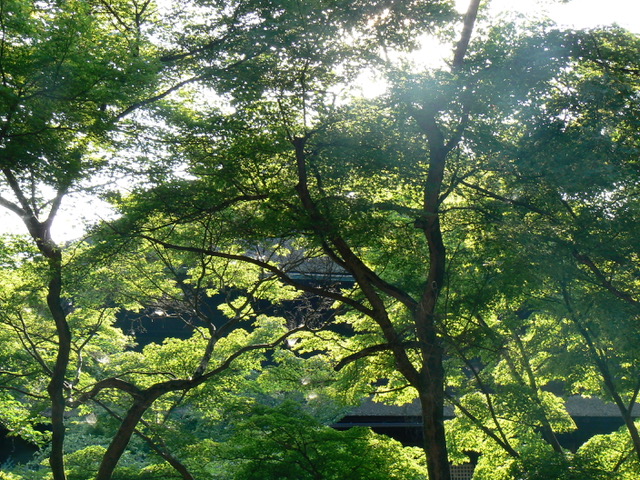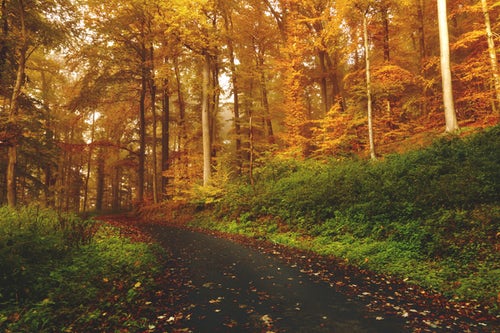The Sangha is the third of “the three jewels” in which the Buddhist members take refuge. It is composed of all the people who have been longing for the virtue and harmony appropriate to Buddhahood since Buddha’s death and following the Dharma as a means to reach transformation. It can be a monastic or lay Sangha depending on people’s involvement, status or level of realization. But, widely speaking, anyone who enters the Buddha’s path while taking refuge in the Buddha’s teaching belongs to the Sangha. However let us notice that the Sangha mentioned in “the three Jewels” consists of people having reached a certain state of experience and understanding of the awakening.

The first disciples
At the time of the “original Buddhism”, the only way to start practicing a spiritual path was to abandon one’s family and join a group of disciples. Anyone – and not only a member belonging to the caste of the Brahmins (religious people) – who abandoned his home with the purpose of looking for religious or philosophical truth, was given the status of “withdrawing person”. He would become what was called a sramanera or a hermit or a begging monk in the sutras. For lay people it was a deserving practice to give him alms or feed him if he asked for them. Shakyamuni who belonged to the caste of the Kshatriyas (the warriors) joined a group of sramaneras after leaving his palace. After awakening, Buddha met five of the members of this group again and started to transmit his teaching with the doctrine of the Four Noble Truths and the Octuple Path, and so set the basis of the first Sangha. As the years of teaching went by, the Sangha became composed of different groups of monks (the bikshus) and nuns (the bikshunis) who acted independently from one another according to particular rules of organization and behaviour.
When someone decided to devote his life to practicing, he would become a member of one of these groups. The one who aspired to become a monk chose another monk as a master who would care of the novice for all his life and became his initiation master. During a specific solemn ceremony called the ceremony of “the three masters and the seven witnesses”, the novice received two other masters, “the ceremony master” and “the teaching master” who would transmit him the basic rules of the Buddhist practice. Seven other monks “the witnesses” would make this “initiation family” complete. The people who did not feel able to withdraw from life supported the Sangha and protected the Buddha’s teachings while continuing to live their lay life. These people were called the upasakas or upasikas (lay men and women).They had access to the Buddha’s teachings thanks to the monks who transmitted them to them.
Theravada Buddhism
This organization of the sangha was maintained in the Theravada Buddhism or the Ancients’ Doctrine (an Ancient is a monk who has practiced for at least ten years). This branch which spread towards South-East Asia, Sri Lanka, Burma, Cambodia, Thailand, Laos and partly in Vietnam represents one of the two great branches of Buddhism. Based on the doctrine of the Four Noble Truths, the teaching of Theravada Buddhism which took form while Buddha or at least his direct disciples were alive recommends disregarding the ordinary world while entering monastic life as well if possible. Its purpose is to put an end to believing in individual ego so as to reach nirvana by mastering one’s passions. Their ideal is to become arhats, people disregarding the world and liberated from the cycle of births and rebirths. The disciples of this Vehicle called “the listeners” do not think they will be able to reach the state of Buddha, their master, even if he has transmitted them the teaching leading to liberation.

The Great Vehicle: a revolution
The Great Vehicle Buddhism also called Mahayana which appeared in India at the beginning of the Christian era completely transformed this vision. It states that every human being can reach Buddha’s awakening. This Buddhism appeared in” the North”, in China (as soon as the 1st century), in Japan (in the 6th century) and in Korea and Vietnam. The Great Vehicle sutras, and particularly the Lotus Sutra which is the basis of the vast majority of the Asian Buddhism, insist on the temporary and occasional aspects of the basic Theravada teachings. Indeed this Vehicle is also called The Small Vehicle or Hinayana in the Mahayana texts, considering that its teachings are mere clever means to take people with simple or arising aspirations towards the way to liberation. In the Great Vehicle sutras we learn that other Buddhas are living in other universes. Contrary to the ancient texts these sutras assert that the historical Buddha is the incarnation of a transcendent Buddha. This Buddha also delivered such deep Teachings that they were kept secret or only transmitted to exceptional beings called bodhisattvas who aimed at reaching the Buddha’s complete and supreme awakening. The Great Vehicle sutras present this Teaching which was intended for bodhisattvas. The ambitious and generous purpose of the Great Vehicle is to lead every human being to awakening and so bodhisattvas work to guide them in this world with great compassion.
The Diamond Vehicle
Even though the Diamond Vehicle or Vajrayana, taken from the Great Vehicle is a minority Vehicle in the world Buddhism, it is often considered today as a separate Vehicle. It is concerned with the Tibetan Tantric Buddhism which developed between the 3rd and 5th centuries in Tibet, Mongolia and Bhoutan. The Tantric Buddhism which is generally considered as a faction from the Great Vehicle adds techniques of invocations to divinities and reciting ritual incantations. It is present in other countries such as Japan too.

From monks to lay people
The doctrines of the Ancients’ Vehicle or Theravada and the one of the Great Vehicle present noticeable dogmatic differences in the scope of their research and the vision they can offer. However monastic life is almost identical even if the image of the monk is less idealized in the Great Vehicle, its precepts are less numerous and asceticism less great. Traditionally then, the Sangha gathers monks in charge of rituals and the preservation of the texts and lay people who materially support the clergy, delivering their teaching in exchange.
In India, Buddhism spread thanks to wandering monks while, in China it did so along the Silk Roads thanks to the merchants who were particularly open to this religion that they found very uniting and very pragmatic, closely tuned in to reality. Buddha entrusted lay people the task to organize his cremation and the preservation of his relics. After his death, lay people had to look after the sacred places. But, in spite of the importance lay people played in the development and the spreading of Buddhism and in spite of the universality of the Great Vehicle teaching transmitted to monks, nuns, lay men and women, monks mostly remained considered as the only guardians of the Teaching.
It is only at the beginning of the XXth century that communities entirely composed of lay people were created, especially in Japan. Present democratic societies probably represent the most appropriate place for Buddha’s message and deep wish for all human beings to practice his teaching equally and have access to supreme wisdom.
In Western countries, in France and particularly in Europe, a tendency for laicity develops. However most of these lay communities remain connected to monastic authorities.
Photo : Jean-Benoît Dupont (top) Sebastian Unrau (middle) Autumn Mott (bottom)
